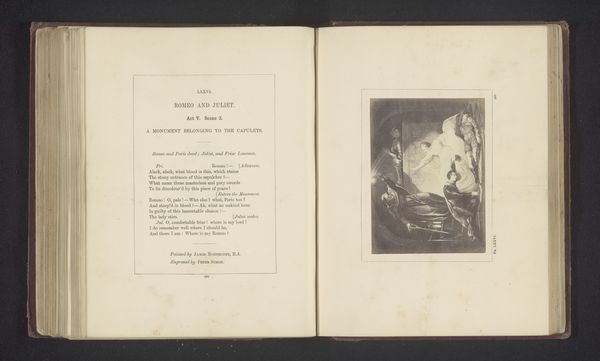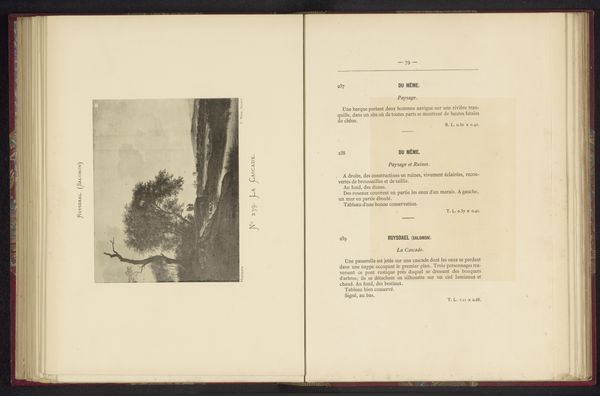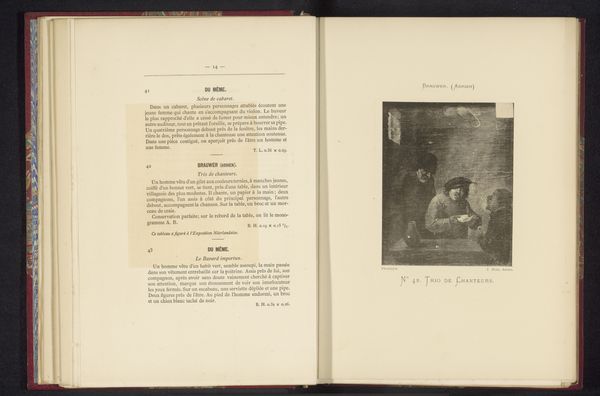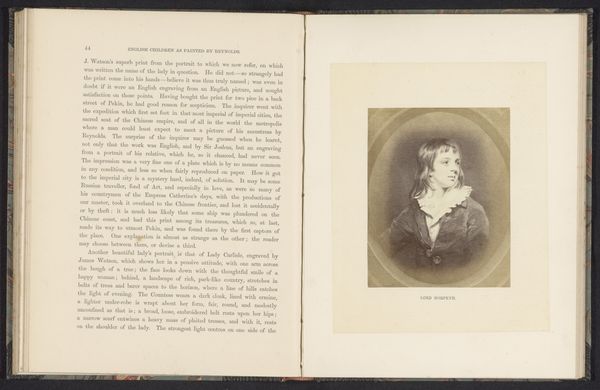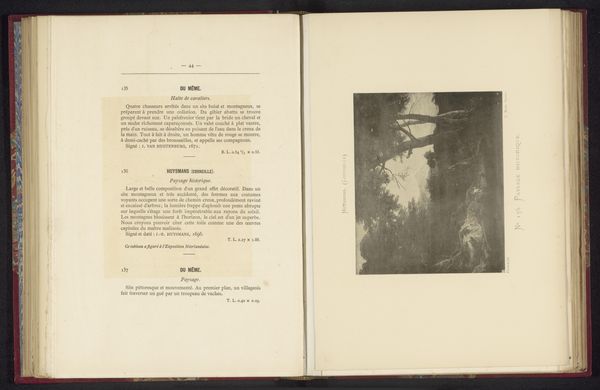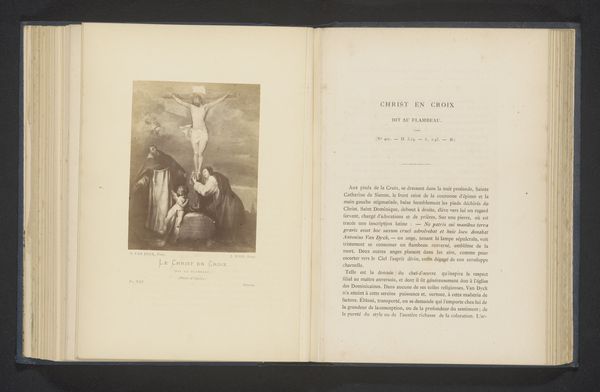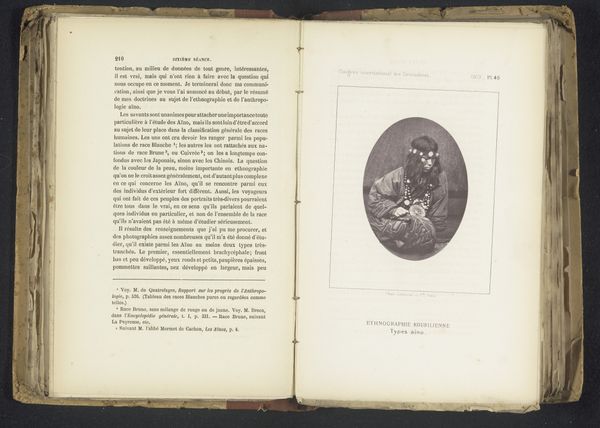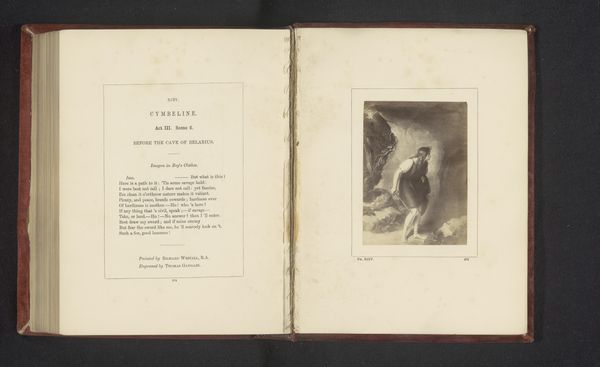
Reproductie van een werk van een gespalkt dierenkarkas van Isaac van Ostade before 1883
0:00
0:00
print, etching
#
dutch-golden-age
# print
#
etching
#
landscape
#
genre-painting
Dimensions: height 162 mm, width 122 mm
Copyright: Rijks Museum: Open Domain
Curator: We’re looking at a reproduction of a work attributed to Isaac van Ostade, dating from before 1883. It's titled "Reproductie van een werk van een gespalkt dierenkarkas van Isaac van Ostade," an etching presented in a book. Editor: Oh, it's somber, almost gothic, in its stark portrayal. The heavy shadows cast a mood of… well, of impending butchery, I suppose. The oval frame intensifies the feeling of viewing a private, almost clandestine scene. Curator: Indeed. Van Ostade, and now Joseph Maes who reproduced it, often depicted scenes of everyday life. What's compelling is how the familiar is made… well, less so, through stark depiction. Consider the socio-economic reality: meat preparation wasn't a detached clinical act, but rather labor-intensive. These prints made such processes visible, highlighting our relationship to the food chain. Editor: Visible, yes, but also filtered, wouldn't you say? The artistry lies in choosing what aspects to emphasize or omit. Is it just me, or is there a hint of… pity here? The composition centers the carcass, yet its vulnerability resonates strongly against the stoic figure preparing it. The work demands a response that goes beyond just acknowledgment of its production, one tinged with something resembling feeling, or lament. Curator: Feeling has everything to do with it! Artists like Van Ostade engaged deeply with their subjects and were closely connected to the materiality and the processes within it. We may reflect, too, on the labor implied, the cost and sustenance that hinges on it. These aspects often get glossed over when discussing genre painting. Editor: You are right. The emotional dimension often evades scholarly scrutiny. By revealing the inherent contradictions of everyday reality – its brutality, its beauty, its necessity—art opens our eyes to ourselves. I hadn't initially considered the human cost. I can tell that your expertise brought me there today. Curator: Well, thanks for your musings! Examining these works from different points can definitely enrich one's encounter with them.
Comments
No comments
Be the first to comment and join the conversation on the ultimate creative platform.

